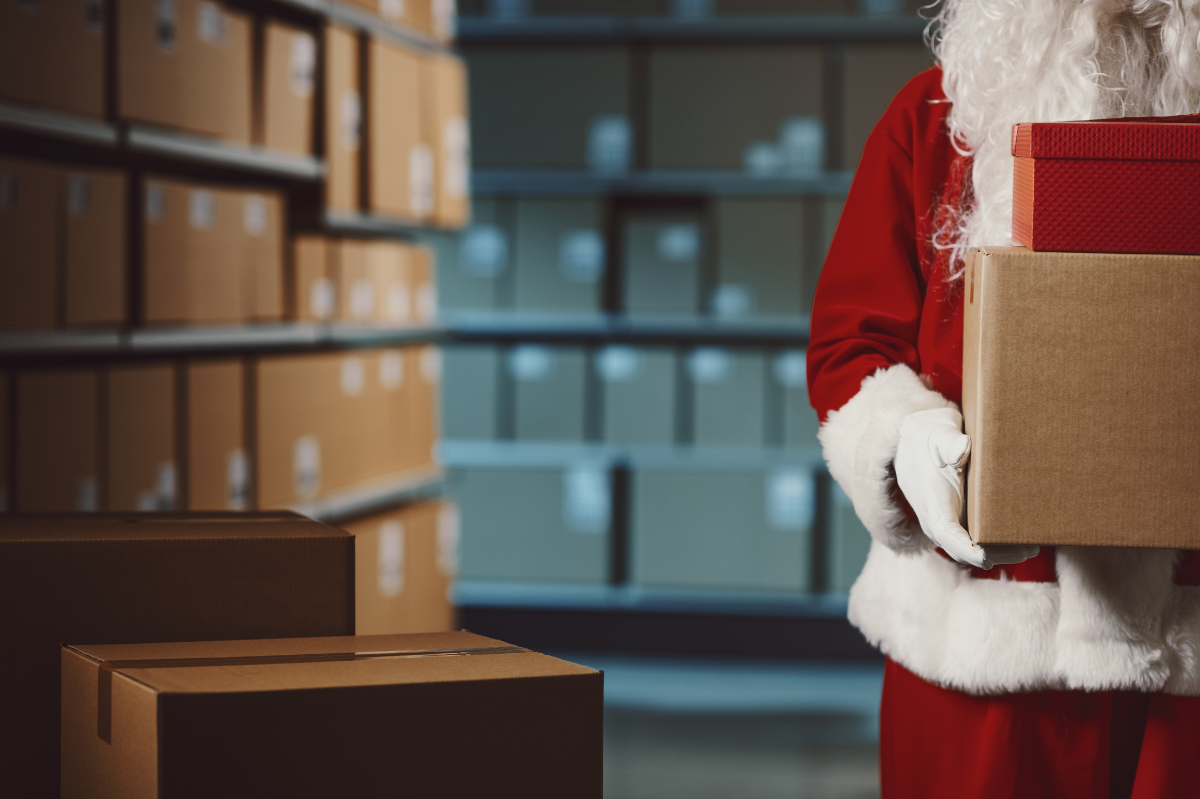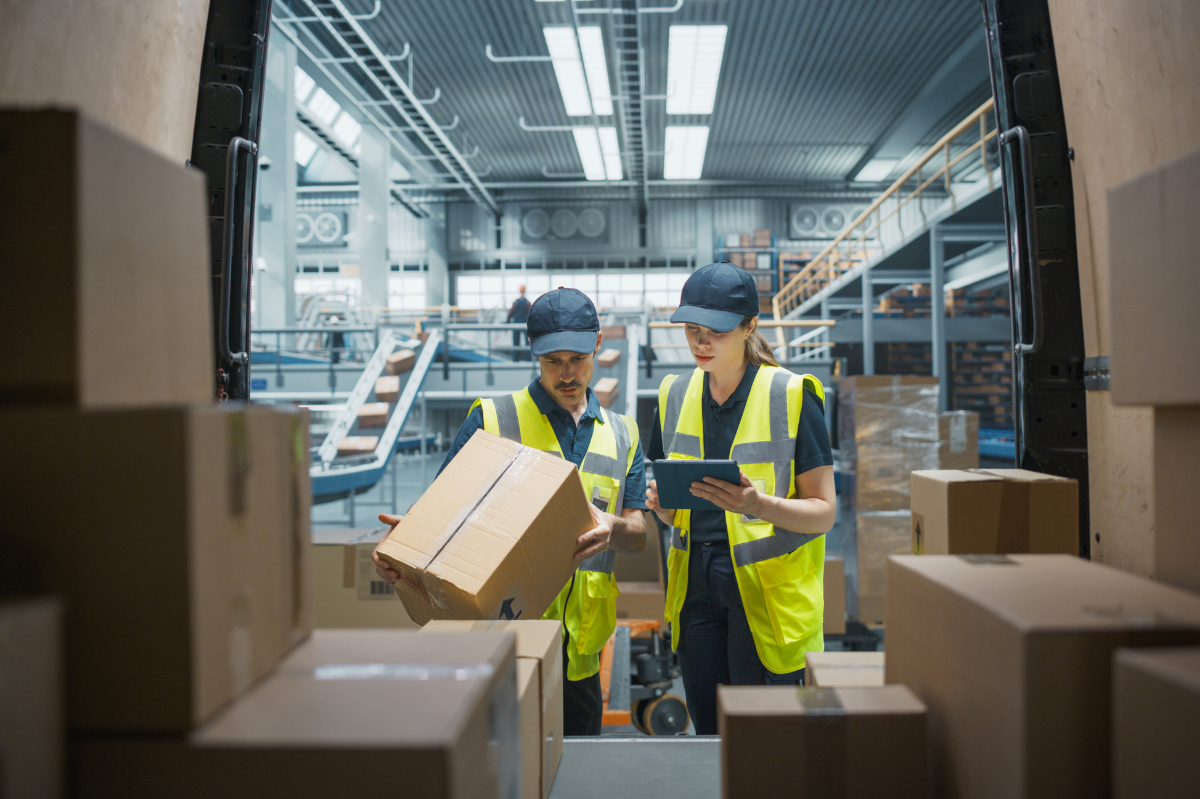From Simple Label Printing to Smart Fulfillment Solutions
Shipping software was primarily focused on label printing, basic rate comparison, and connecting online stores to shipping carriers. While effective for single-node fulfillment and moderate order volumes, these systems struggled with complex and growing supply chain operations, multi-node inventory, and rising customer expectations.
Looking ahead, shipping software trends in 2025 highlight a shift to AI-powered and advanced shipping technology, designed to optimize logistics operations, inventory management, and commerce fulfillment across distributed systems.
Unlike early shipping softwares, which relied on rigid rules and manual intervention, new software platforms are built as API-first logistics orchestration layers, seamlessly integrating with warehouse management systems (WMS), ERPs, 3PLs, and ecommerce platforms in real time.
How Modern Shipping Technology Works
Smarter Fulfillment with Multiple Warehouses
Modern ecommerce operations involve multiple fulfillment nodes: fulfillment centers, third party logistics (3PL) providers, micro-fulfillment centers, and international fulfillment partners. First-wave software applied static rules across all nodes, often ignoring inventory availability, shipping zones, or node priorities.
Second-wave platforms use real-time data to dynamically calculate optimal fulfillment paths, factoring in:
- Inventory levels across all fulfillment nodes
- SLA throughput and pickup windows
- Service coverage and shipping destination constraints
- Carrier rates and delivery times
This data-driven approach improves fulfillment efficiency, reduces latency, and supports seamless fulfillment across global operations.
Real-Time Shipping Rates Save Money
Old software relied on static rate tables, leading to higher shipping costs. Modern shipping technology integrates with carrier APIs, including national, regional, and hybrid carriers, to enable real-time rate shopping with live shipping prices.
Benefits include:
- Lower shipping costs through automated selection of the most cost-effective carrier
- Conditional prioritization for low carbon, fastest delivery, or cost savings
- Millisecond-level calculations based on contract terms, zone-specific pricing, and customer demand
For example, if UPS Ground costs $7.22 for two-day delivery but a regional carrier offers $5.41 for the same SLA, the system automatically selects the cheaper option without affecting delivery speed, enhancing customer satisfaction.
Integrated Performance Feedback Loops
Modern platforms leverage real-time analytics at every stage of the shipment: from when it leaves the warehouse, when and where it's scanned and if any delays happen.
This creates a closed-loop system that enables:
- Automated alerts for delayed shipments
- Lane-level carrier performance tracking
- Continuous optimization of route optimization and shipping logistics
By analyzing this data, operators gain actionable insights without building custom dashboards, improving supply chain operations, fulfillment efficiency, and customer experience.
Enhancing Supply Chain Optimization
Today, modern logistics operations offer a more complete view of inventory management, order fulfillment, and shipping costs. Warehouse management systems track inventory in real time, reduce picking and packing errors, and streamline the entire process from order receipt to shipment.
Data analytics and demand forecasting provide live insights into sales trends, regional consumer demand, and potential supply chain disruptions, enabling smarter decisions.
Partnering with the right fulfillment partner or a third-party logistics 3PL provider ensures reliable delivery, optimizes international fulfillment, and enhances customer satisfaction.
Functional Shifts in Modern Shipping Platforms
From Static Rules to Conditional Logic Engines
First-wave systems relied on simple rules: “If customer in CA, use UPS Ground.” Today, AI-powered and machine learning systems evaluate real-time data to dynamically choose:
- Lowest-cost carrier meeting SLA thresholds
- Optimal fulfillment center for inventory availability
- Fastest delivery within cost savings limits
These platforms integrate seamlessly with inventory management software, ecommerce platforms, and logistics providers to support high-volume commerce fulfillment without operator oversight.
From Siloed Tools to Federated System Integrators
Modern solutions serve as integration layers for:
- ERPs (e.g., NetSuite, Acumatica)
- WMS platforms (e.g., Warehouse OS, Logiwa)
- OMS tools and custom online store backends
- Carrier APIs (national, regional, parcel, LTL)
- Analytics platforms (e.g., Looker, Snowflake)
APIs and webhooks automate tasks such as label printing, rerouting, and SLA compliance, enabling seamless fulfillment while reducing manual tasks.
Navigating International Fulfillment
Expanding globally introduces challenges like customs compliance, complex inventory management, and increased shipping costs. Modern fulfillment technology and third-party fulfillment partners help ecommerce businesses:
- Track real time inventory across multiple fulfillment centers
- Allocate inventory efficiently to meet regional spikes in consumer demand
- Deliver reliable shipping to international customers
This integration ensures a successful online store can meet rising customer expectations while scaling globally.
In-House Fulfillment vs. Third-Party Fulfillment
Choosing between in-house fulfillment and third-party fulfillment is critical for ecommerce businesses:
In-House Fulfillment:
- Direct control over inventory management and fulfillment process
- Custom packaging and operational oversight
- Requires investment in warehouse space, staff, and fulfillment technology
Third-Party Fulfillment / 3PL:
- Scalable operations and expertise in shipping logistics
- Access to advanced fulfillment solutions and logistics technology
- Enables focus on online business growth
Hybrid strategies combining AI-powered tools, machine learning, and predictive analytics optimize commerce fulfillment for any ecommerce operations model.
How Modern Shipping Software Helps Online Stores
Second-wave platforms enable logistics teams to:
- Programmatically reduce shipping costs while maintaining SLA
- Respond to customer demand for fast, flexible delivery
- Detect supply chain disruptions before affecting customer experience
- Automate order fulfillment across multiple fulfillment providers
- Maintain operational control while leveraging third party logistics providers
This infrastructure supports mid-market and enterprise retail fulfillment, ensuring reliability and scalability.
Key Features of Modern Shipping Software
Key features include:
- API-first architecture with webhooks and event triggers
- Real-time shipping carrier evaluation and SLA monitoring
- Inventory-aware routing logic across multiple nodes
- Live performance analytics and carrier benchmarking
- Modular integrations with upstream and downstream systems
- Support for hybrid fulfillment (owned + 3PL, DTC + B2B)
- Conditional business logic execution at scale
- Comprehensive ecommerce fulfillment support
Conclusion: The Operational Infrastructure for Modern Fulfillment
Shipping software trends 2025 show that commerce fulfillment has evolved beyond basic label printing. Modern platforms serve as critical infrastructure, providing:
- Deep integration across supply chain operations
- Predictive analytics for smarter inventory management
- Tools to improve fulfillment efficiency and customer satisfaction
The future belongs to ecommerce businesses treating shipping as a strategic, data-driven function rather than a fixed cost. Modern shipping software turns logistics from a bottleneck into a competitive advantage.
Want to learn how this works for your brand specifically? Speak to one of our shipping experts today.
Related Topics
Learn how VESYL can save you money on shipping
Not sure which plan suits you best? Have questions about our software? Contact our sales team for expert guidance.
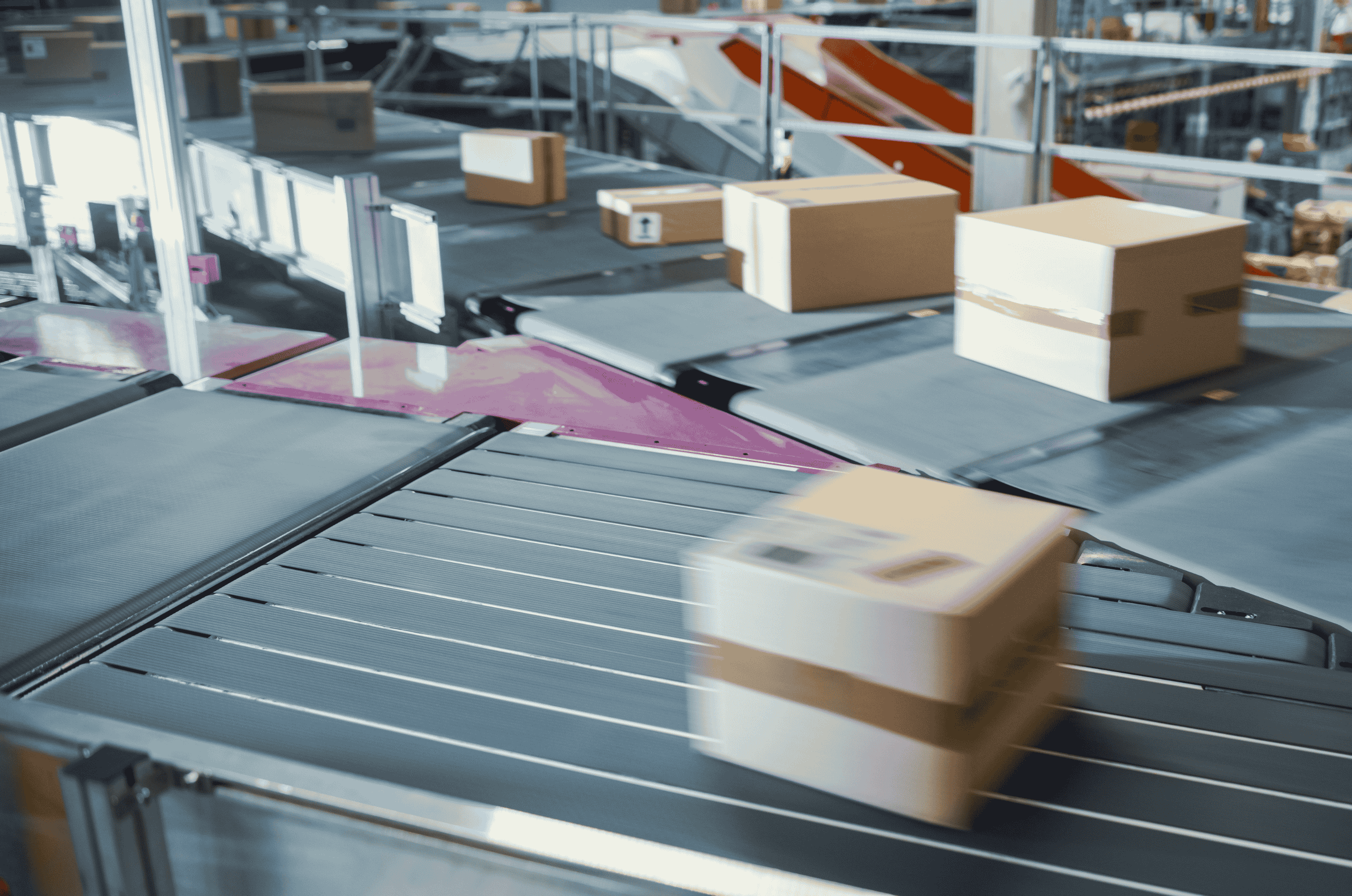
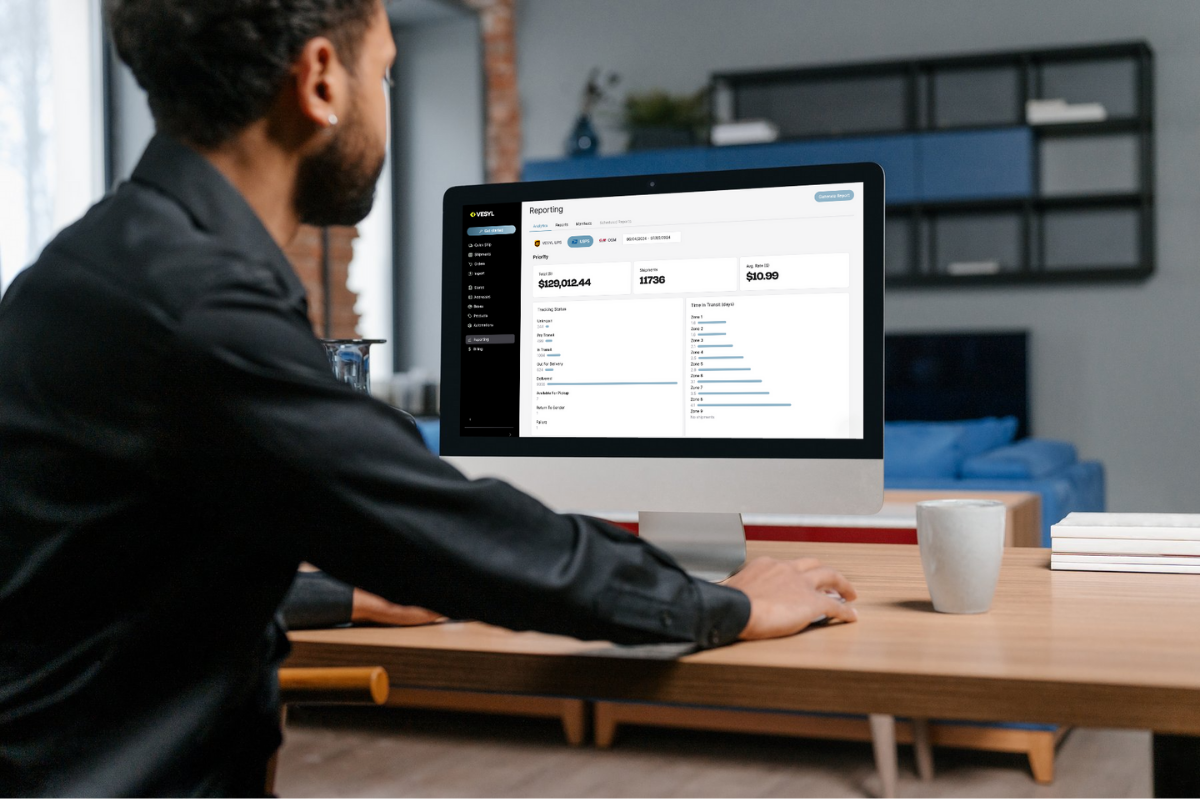
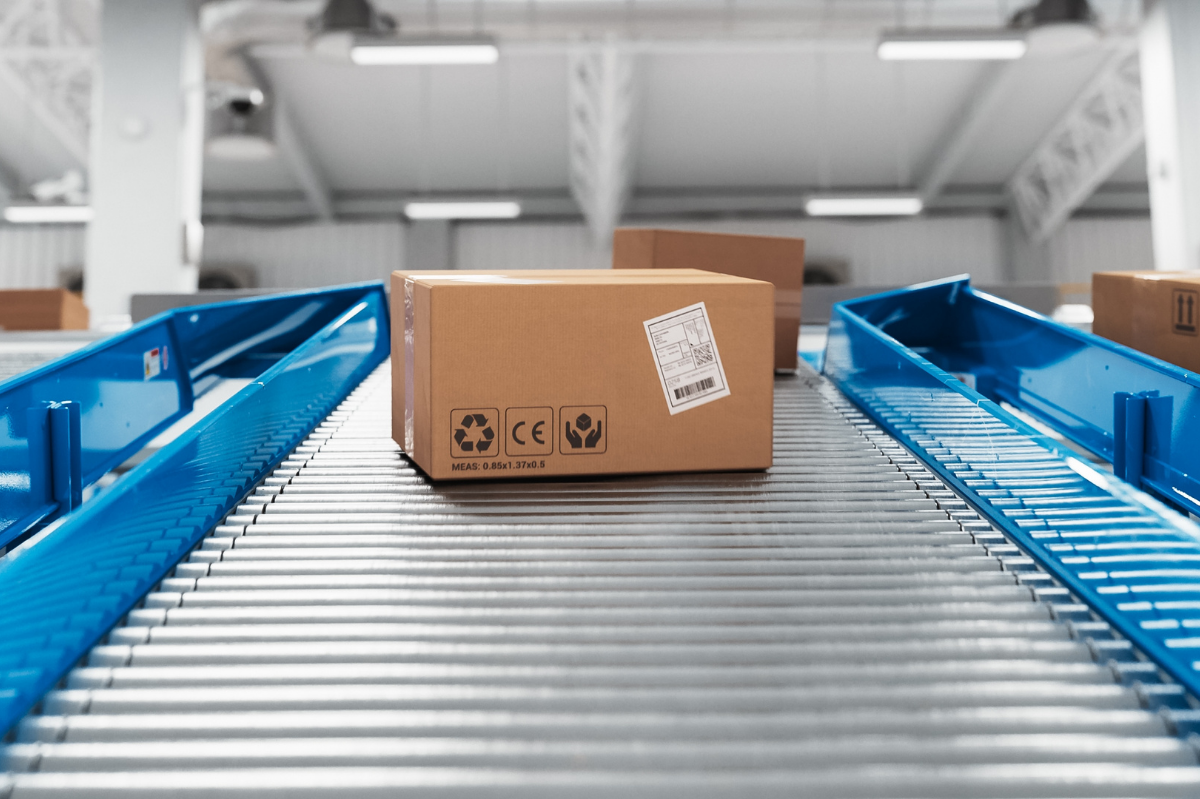
.png)
